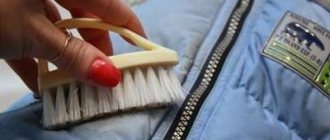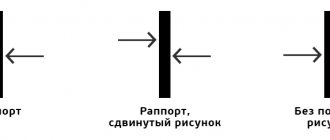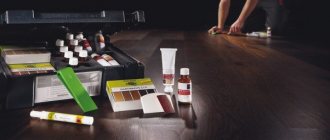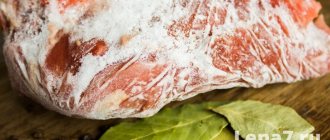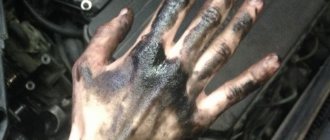Cleaning porcini mushrooms, and any other mushrooms collected in the forest, is a matter of incredible urgency, because over time their fruiting bodies lose moisture and taste. Ideally, it is better to carry out preliminary cleaning right in the forest, and upon arrival home, finally clean the crop from dust, soil and debris.
At first glance, cleaning does not present any particular difficulties, because you just need to scrape the stem and cap with a knife. But in fact, this process has several important nuances that will help not only preserve the freshness of the crop, but also its taste. In this article we will look at basic information regarding cleaning boletus mushrooms in the forest and at home before cooking.
How to clean porcini mushrooms
Boletus is called the real king of the forest, because it has a distinct smell, an extremely pleasant taste and contains many useful nutrients. Naturally, in order for this perishable product to retain all its properties, it must be properly prepared, and the very first stage of cooking is cleaning.
It is better to remove large pieces of earth, needles or leaves immediately in the forest, directly during collection. This will make your task easier when you get home. In fact, cleaning boletus mushrooms is not particularly difficult, because they are large, with a fleshy leg and a large cap, from which it is easy to remove dirt (Figure 1).
To thoroughly clean your harvest, prepare a knife, large bowl, and paper towels ahead of time. You will also need an old dental rosary.
White cleaning looks like this:
- First, we clean the surface from large particles of debris: adhered leaves, pine needles or soil residues.
- We quickly rinse the boletus under running water and place it in a colander to drain. It is important that washing is not practiced if the mushrooms are intended for drying.
- Using a sharp knife, cut off the lower part of the leg. This will remove soil and dust particles from the surface.
- Gently wipe the cap and stem with a paper or cloth towel. This will help remove any water droplets or dust particles that may remain after washing.
- Next, you can rub the pulp with a toothbrush. It will help remove damaged pulp and even the smallest particles of debris.
Figure 1. Cleaning boletus mushrooms
After this, you need to wash them again and start cooking them. In this case, it is advisable to cut the boletus along the length or cut its stem to check whether there are passages left by worms inside the fruiting body. Unfortunately, damaged mushrooms are not very tasty, so it is better to throw them away.
Possible problems and ways to solve them
When collecting fruiting bodies, even experienced mushroom pickers can get carried away and not notice how their poisonous counterparts got into the basket with noble whites.
The most common boletus twin is gall. This mushroom is very similar in appearance to the white one. You can distinguish it by its cut. Boletus never changes its color. Even after cooking and marinating.
But the gall fungus will immediately darken at the cut site. If during cleaning you see such an effect, you need to immediately throw away the poisonous double and wash your hands thoroughly with soap.
Bile mushroom
Another problem is mushrooms that are too old. As a rule, they are simply stuffed with worms and insect larvae.
This means they contain a huge amount of decomposition products. If you come across a heavily infected mushroom, it is better to throw it away without regret.
The harm caused by such a specimen is difficult to predict - from indigestion to severe allergic reactions.
With age, decomposed proteins accumulate in old mushrooms and their unique taste qualities are lost. Therefore, it is better not to be greedy and not to take too old copies at all.
Reference! Porcini mushroom not only has a wonderful taste, but also brings great benefits in the treatment of many diseases - atherosclerosis, tuberculosis, anemia. It boosts immunity and improves the functioning of the gastrointestinal tract.
Cleaning porcini mushrooms after picking in the forest
“Silent hunting” is an activity that cannot be rushed. If you are already lucky enough to stumble upon a large family of boletus mushrooms, you should not headlong cut off all the mushrooms and immediately throw them into the basket. In the forest, immediately after collection, it is much easier to clean the legs and caps of large debris. This will make the job of returning home much easier.
After cutting, carefully inspect the mushroom. There should be no rotten pulp on it. If everything is in order with the boletus, proceed to preliminary cleaning. First, you need to cut off the bottom of the stem to check for worms in the flesh. If you find only one hole left by insects, you can simply cut it out and put the fungus in a basket. But, if there are two or more such moves, it is better to throw away the boletus.
Note: If you put a wormy specimen in a basket, the insect will not only continue to gnaw passages in it, but may also move to other specimens, and part of the harvest will be spoiled.
After this, you can simply remove large debris from the stem and cap. Ideally, it is better to do this with an old toothbrush with soft bristles, but most mushroom pickers prefer to remove leaves and needles simply by hand, and do the final cleaning at home.
Description of the appearance and differences between false doubles
Valuya was lucky with his poisonous doubles. There is only one dangerous mushroom that pretends to be a bull-fist - the false valui. Let's take a closer look at what the difference is.
| Valuy (Russula foetens) | False valui (Hebeloma crustuliniforme) |
| from the genus Russula of the Russula family | from the genus Gebeloma of the Arachnidaceae family |
|
|
How to clean porcini mushroom at home
When you come from the forest, you need to immediately start cleaning, because over time they lose their elasticity and their taste.
If you have already pre-cleaned the boletus mushrooms in the forest, all you have to do is walk over them with a brush or a damp towel, depending on what treatment you will be subjecting the crop to. For example, if you are going to fry, boil or pickle mushrooms, you need to not only peel them, but also rinse them thoroughly. But before drying, boletus mushrooms cannot be washed, as due to excess moisture they will not dry correctly.
Further manipulations with the harvest also depend on how you plan to cook. So, for heat treatment and freezing, both the cap and the stem must be cleaned, and large specimens must be cut into pieces of approximately the same size.
How to clean the cap of a porcini mushroom
Mushrooms spoil very quickly, so they need to be processed within 3-4 hours after collection. If you were unable to clean and prepare them for processing, simply transfer the harvest to an enamel container and place it in the refrigerator without covering it with a lid. This way, boletus mushrooms can be stored for another 1-2 days, but they should not be shaken or constantly moved, as this can damage the delicate pulp (Figure 2).
Figure 2. Cleaning the caps
The boletus cap does not need very thorough cleaning. It is enough to remove large debris from its surface and lightly wipe it with a damp cloth or an old toothbrush to remove dust. Unlike boletus, which has a sticky film on its cap, the surface of the boletus skin is velvety and pleasant to the touch.
If you do not plan to dry the mushrooms, you can rinse them under running water. This will remove any remaining dust and debris not only from the cap, but also from the stem. You need to wash the inside of the cap especially carefully, since this is where the most dust and debris accumulates.
Do I need to peel the stem of porcini mushrooms?
The boletus leg needs more thorough cleaning. First of all, you need to update the cut in its lower part, even if you did it in the forest. You need to trim the bottom of the leg in such a way as to capture particles of pulp along its entire circumference (Figure 3).
Figure 3. Removing debris from legs
Next, you need to lightly scrape the flesh of the leg. The movements should be light, since the main purpose of such peeling is to simply remove the skin without damaging the pulp. After this, simply wipe the crop with a damp towel or rinse under running water if you do not plan to dry the boletus mushrooms. At the final stage, the harvest should be placed in a colander and the remaining water should be allowed to drain.
Do I need to soak chanterelles in water?
Despite the fact that chanterelles contain bitterness, which repels pests, more often than not, pre-soaking is not required.
But there are exceptions, these include:
- Old large fruits have time to collect a large amount of unpleasant taste.
- Dry weather often results in mushrooms that are very bitter during the season. Chanterelles collected near coniferous trees and moss also accumulate an unpleasant taste.
- Some housewives make the mistake of freezing fresh mushrooms when there is no time for processing. This is also a factor in the accumulation of unpleasant taste.
Bitter chanterelles are tasteless, but are not hazardous to health if collected in environmentally friendly places, properly processed and stored. In other cases, soaking is not required, especially if they were previously soaked in water when removing debris.
Popular articles Rose Heavenly Pink - description of the varietyIt is worth paying attention to one of the varieties of this mushroom - the black chanterelle. Not everyone is familiar with this delicacy, but connoisseurs love to prepare it.
It can be fried fresh, but only the cap is used (the stem is quite dense). But it gained great popularity in dried and ground form, which is added to dishes during cooking to give a special taste.
It must be pre-soaked to get rid of accumulated toxins.
Do I need to soak chanterelles before frying?
In this case, the matter is not only in the quality of the mushrooms, but also in the option of cleaning and preparing the chanterelles before frying. Cases when it is necessary to soak mushrooms have already been described.
The fact is that some chefs pre-boil the harvest before cooking it in a frying pan. Even if you come across specimens with the presence of bitterness, it will all go into the broth.
If the harvest is fresh and there is no doubt, after chopping the mushrooms, immediately fry them in a frying pan until cooked.
Do I need to soak chanterelles before marinating?
Before marinating, chanterelles are almost always pre-boiled. During such heat treatment, the bitterness, if present, will all go into the water, which must be changed after 10 minutes of boiling.
In order for large mushrooms not only to be cooked, but also to get rid of the unpleasant taste, they must be cut into pieces similar in size to the smallest specimens.
Some recipes recommend marinating only the chanterelle caps after processing. In this case, you should not be afraid of bitterness at all, since it is mostly contained in the legs. But if you are going to prepare caviar from them, then it is better to keep them in a salted and acidified mixture for no more than 20 minutes.
Is it possible to soak chanterelles overnight?
As already mentioned, chanterelles are a fragile mushroom. After cleaning and being in water for a long time, they will become lethargic, soft, and may partially lose color and taste, as well as useful substances. If there is no time, some advise storing on a shelf intended for vegetables, only in sorted form. You don't even need to wash them. Perform all necessary actions immediately before preparation.
Frozen semi-finished chanterelle product, if the mushrooms have not been pre-boiled, often tastes bitter. In such cases, prolonged soaking in a salty mixture and then boiling helps get rid of the unpleasant taste.
But as for the black species, many people soak it, leaving it in water for 12 to 24 hours.
How to clean porcini mushrooms before frying
Regardless of the amount of harvest, some of the mushrooms will in any case remain for frying, because it’s so nice to please your family with this delicious forest delicacy (Figure 4).
Figure 4. Preparing boletus mushrooms for frying
In fact, cleaning boletus mushrooms before frying is no different from preparing boletus mushrooms for any other heat treatment. First you need to cut off the bottom of the leg and inspect whether there are passages left by worms in the pulp. The damaged parts are cut out, the cap is cleaned of dust and debris, and the outer skin of the stem is carefully peeled off. Next, the boletus mushrooms should be washed several times in running water. If you suspect that there may be worms in the pulp, briefly soak the boletus mushrooms in salted water. All the insects will crawl out and all you have to do is rinse them again under running water, cut them into arbitrary pieces and start frying.
Answers to common questions
Collecting boletus mushrooms is a pleasure, because everyone understands its value and rejoices at the “catch.” In order for cleaning to also please you, it is important to study its secrets and do this with an understanding of the usefulness of all manipulations.
The cap is brown, in light and dark shades depending on age, velvety to the touch, 7-30 cm in diameter, and in a particularly favorable climate it can be found even up to half a meter. The shape at a young age is hemispherical, straightens over time.
https://vsemkulinaram.ru/xozyajkam-na-zametku/kak-chistit-belye-griby-pered-prigotovleniem.htmlhttps://fermoved.ru/gribyi/kak-chistit-i-obrabatyvat-belye.htmlhttps:// fermilon.ru/sad-i-ogorod/griby/kak-obrabotat-belye-griby-pered-prigotovleniem.htmlhttps://ogorod-bez-hlopot.ru/chistka-belyx-gribov.html
How to wash and peel porcini mushrooms for freezing
Modern kitchen appliances, in particular freezers, allow you to enjoy boletus not only during the harvest season, but also in winter. Naturally, for this, the fruiting bodies need to be properly prepared and cleaned.
Unlike cleaning before salting or heat treatment, preparing boletus mushrooms for freezing includes mandatory washing and soaking in salted water. First, we carry out traditional activities: we clean the caps and stems from large debris, cut off the lower part of the stem and place the fruiting bodies in a large bowl or pan with salted water. The mushrooms should sit in this solution for about an hour. This will make it possible to remove insects, worms or insect larvae from the pulp that may be accidentally missed during the cleaning process (Figure 5).
Next, remove the boletus mushrooms from the salt water, rinse thoroughly and place in a colander. To make the frozen product truly tasty and aromatic, it is better to remove excess moisture from the surface. After this, it is enough to put them in bags or containers. Small specimens can be frozen whole, but large ones are better cut into several pieces.
Figure 5. Preparing porcini mushrooms for freezing
If you want to make a preparation that will be almost ready to eat after defrosting, it is better to cut the boletus mushrooms into small pieces, lightly boil them in water and place them in portioned bags or containers. As a result, you will receive a ready-made preparation that will help you prepare delicious fried mushrooms at any time of the year.
PICKLING
The most suitable mushrooms for pickling are porcini mushrooms, aspen mushrooms, boletus mushrooms, birch mushrooms, and among the lamellar mushrooms - honey mushrooms, chanterelle mushrooms, annular cap, etc. It is advisable to pickle each type of mushroom separately. Young, strong mushrooms are selected for pickling. The roots are marinated separately. Before cooking, aspen and birch trees should be doused with boiling water and kept in this water for 7-10 minutes, then rinsed with cold water. This prevents the marinade from turning black.
There are two ways to marinate mushrooms: boil them in a marinade or, after boiling them in salted water, pour the marinade over them.
First way
Pour 1/3 cup of water, 2/3 cup of vinegar per 1 kilogram of fresh mushrooms into an enamel pan and add a tablespoon of salt.
After the solution boils, add mushrooms to it and cook them over low heat, stirring carefully and removing the foam. Cooking time for caps - 8-10 minutes, legs - 15-20 minutes
Chanterelles and honey mushrooms are cooked for 25-30 minutes.
When the mushrooms begin to settle to the bottom, the boiling is completed. Before the end of cooking, add a teaspoon of granulated sugar, allspice, cinnamon, cloves, bay leaf and citric acid on the tip of a knife. The cooled mushrooms are transferred to jars and filled to the top with the cooled marinade.
Second way
Boil the mushrooms in salted water (2 tablespoons per 1 liter of water), after which they are placed on a sieve to drain the water and placed in jars. The jars are filled with chilled marinade at the rate of 250-300 grams of marinade per 1 kilogram of mushrooms.
To prepare the marinade, pour 0.4 liters of water into a saucepan, add half a teaspoon of salt, 6 peppercorns, bay leaf, cinnamon, cloves and citric acid on the tip of a knife. Boil all this over low heat for 20-30 minutes, cool slightly and add 1/2 cup of vinegar.
To protect the mushrooms from molding, pour a thin layer of vegetable oil on top. The product should be stored in a cool place at a temperature of about +5°C. Marinated mushrooms are ready to eat immediately after cooking.
How to cut porcini mushrooms
During the process of drying, pickling, freezing or salting, it is advisable to sort boletus mushrooms by size, since small specimens cook much faster than large ones. Very large specimens are usually cut into one or several parts. It is better to do this along the cap and stem, then both after freezing and after drying, the product will look attractive (Figure 6).
Figure 6. Slicing boletus mushrooms
You can marinate and salt porcini mushrooms whole, but some housewives prefer to separate the stems from the caps. In fact, the process of cutting boletus mushrooms does not affect their taste in any way. Its main purpose is to make the pieces more uniform in size or to finally check the pulp for worms.
If you plan to boil and freeze mushrooms, it is better to cut them into approximately equal pieces. For example, the leg is cut into thick slices, and the cap is simply divided into several parts.
The process of cleaning porcini mushrooms is shown in more detail in the video.



